 |
 |
 |
 |
 |
 |
 |
 |
 |
Click on the picture of your favorite celebrity to view more information. |
 |
 |
 |
 |
 |
A MATCHLESS LIBRARY TELEVISION ARCHIVE |
 |
|
 |
|
 |
|
 |
|
 |
|
 |
|
 |
|
 |
|
 |
|
 |
|
 |
|
 |
|
 |
|
 |
|
 |
|
 |
|
 |
|
 |
|
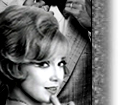 |
|
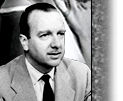 |
|
 |
|
 |
|
 |
|
 |
|
 |
|
 |
|
 |
|
 |
|
 |
|
 |
|
 |
|
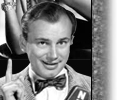 |
|
 |
|
 |
|
 |
|
 |
|
 |
|
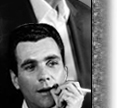 |
|
 |
|
 |
|
 |
|
 |
|
 |
|
 |
|
 |
|
 |
|
 |
|
 |
|
 |
|
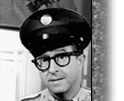 |
|
 |
|
 |
|
 |
|
 |
|
 |
|
 |
|
 |
|
 |
|
 |
|
 |
|
 |
|
 |
|
 |
|
 |
|
 |
|
 |
|
 |
|
 |
|
 |
|
 |
|
 |
|
 |
|
 |
|
 |
|
 |
|
 |
|
 |
|
 |
|
 |
|
 |
|
 |
|
 |
|
 |
|
 |
|
 |
|
 |
|
 |
|
 |
|
 |
|
 |
|
 |
|
 |
|
 |
|
 |
|
 |
|
 |
|
 |
|
 |
|
 |
|
 |
|
 |
|
 |
|
 |
|
 |
|
 |
|
 |
|
 |
|
 |
|
| Tributes | Talk | Events | News | Variety |
| Documentary | Music | Comedy | Juvenile | Awards |
| Biography | Sports | Productions | Others | Quiz |
| Specials |
|
5357 Results found in Category News Pages: 36 37 38 39 40 41 42 43 44 45 46 47 48 49 50 51 52 53 54 55 56 57 58 59 60 [61] 62 63 64 65 66 67 68 69 70 71 72 73 74 75 76 77 78 79 80 81 82 83 84 85 86 |
|
#19750:
NEWS,THE
1969-05-28, , min. Sam Yorty , William O. Douglas New charges for Supreme Court justice William O. Douglas. Los Angeles Mayor Sam Yorty wins a third term in office. |
|
#19752:
NEWS,THE
1969-05-29, , min. John F. Kennedy , Mike Mansfield Dedication of President Kennedy's birthplace site as national historic site. New ways to end war called for by Senator Mike Mansfield. |
|
#10853:
WORLD THIS WEEK
1969-05-29, WCBS, min. Harry Reasoner News of the Apollo 10 spaceflight, just concluded, and the second space mission to orbit the moon. Harry Reasoner reporting. |
|
#19753:
WORLD TODAY
1969-05-30, WOR, min. Tony Marvin World Today is a radio news program broadcast over the Mutual Broadcasting System and hosted by Tony Marvin.
Topic: events in the news.
Host: Tony Marvin.
|
|
#16185A:
FIRST TUESDAY
1969-06-03, NBC, 21 min. Jack Perkins , Robert F. Kennedy , Sander Vanocur , Sirhan B. Sirhan Special FIRST TUESDAY broadcast. Sander Vanocur is the on-camera editor for this month's issue of NBC's news magazine. Jack Perkins interviews Senator Robert F. Kenndy's killer, Sirhan B. Sirhan on the day following his being sentenced to death. |
|
#19759:
WORLD TODAY
1969-06-05, WOR, min. Tony Marvin World Today is a radio news program broadcast over the Mutual Broadcasting System and hosted by Tony Marvin.
The news topics of the day.
Host: Tony Marvin.
|
|
#19760:
NEWS,THE
1969-06-05, , min. William Rogers Question of early American troop withdrawal from Vietnam goes unanswered by Secretary of State William Rogers. |
|
#19763:
NEWS,THE
1969-06-06, , min. Richard Nixon System of youth advisers set up on draft by President Nixon. 25th anniversary of D-Day. |
|
#19765:
NEWS,THE
1969-06-07, , min. Richard Nixon 25th anniversary of D-Day. System of youth advisers on draft set up by President Nixon. |
|
#19767:
NEWS,THE
1969-06-08, , min. Richard Nixon President Nixon announces 25,000 Vietnam troop withdrawal by end of September. |
|
#19769:
NEWS,THE
1969-06-08, , min. Richard Nixon See # 19767 for details. |
|
#19770:
NEWS,THE
1969-06-09, , min. Richard Nixon , Nguyen Van Thieu United States troop cutback in Vietnam. Hanoi is skeptical, calling it a "farce." |
|
#19771:
NEWS,THE
1969-06-10, , min. Richard Nixon President Nixon briefs nation on Vietnam war. |
|
#TW15:
NBC NEWS WITH TOM BROKAW
1969-06-11, N/A, 30 min. Robert Taylor , Tom Brokaw , Ronald Raegan
News story on the death of screen actor Robert Talyor.
Ronald Raegan gives the eulogy.
|
|
#19772:
NEWS,THE
1969-06-12, , min. Neil Armstrong , Michael Collins , Buzz Aldrin Apollo 11 astronauts receive go ahead for moon flight beginning on July 16th. Radical students attempt to disrupt commencement at Harvard. |
|
#19773:
WORLD TODAY
1969-06-13, WOR, min. Tony Marvin World Today is a radio news program broadcast over the Mutual Broadcasting System and hosted by Tony Marvin.
Host: Tony Marvin.
|
|
#19774:
RADIO NEWS, MUTUAL NETWORK
1969-06-13, , 5 min. Philip Clark President has the right to order wiretaps. Philip Clark reports. |
|
#19777:
TEN O'CLOCK NEWS WITH BILL JORGENSEN, THE
1969-06-13, WNEW, min. Joe Namath , Bill Jorgensen Report on superstitions related to Friday the 13th. |
|
#19778:
NEWS,THE
1969-06-16, , min. Adam Clayton powell The Supreme Court ruled in a 7-1 vote, the House Of Representatives acted improperly in not allowing Adam Clayton Powell to take his seat in the 1966 elections. |
|
#19780:
NEWS,THE
1969-06-17, , min. Rona Barrett , Boris Spassky , Tigran Petrosian Oh! Calcutta opens in New York City, Boris Spassky defeats Tigran Petrosian to win the World chess championship. Rona Barrett reports from Hollywood. |
|
#19781:
NEW YORK CITY PRIMARY RETURNS
1969-06-17, , min. Unknown New York City primary election returns. |
|
#19782:
NEWS,THE
1969-06-18, , min. John Lindsay New York City Mayor John Lindsay defeated in Republican primary, to run as coalition candidate. |
|
#19783:
NEWS,THE
1969-06-19, , min. Richard Nixon President Nixon to discuss war in Vietnam at news conference. |
|
#19784:
PRESIDENT NIXON NEWS CONFERENCE
1969-06-19, CBS, min. Eric Sevareid , Richard Nixon , Dan Rather President Nixon holds news conference about Vietnam war. Discussion after the conference by Dan Rather and Eric Sevareid. |
|
#19786:
CBS EVENING NEWS WITH WALTER CRONKITE
1969-06-20, CBS, min. Walter Cronkite , Harry Reasoner , Richard Nixon , Edward Kennedy Senator Edward Kennedy feels President Nixon has made a commitment for a massive troop withdrawal in Vietnam. Harry Reasoner subbing for Walter Cronkite. |
|
#19695:
ABC NEWS
1969-06-26, ABC, min. Howard K. Smith , William Fulbright , Frank Reynolds , Judy Garland , Prince Charles , Lou Cioffi , Hedy Lamar , James Loder , Vivian Strong Police officer James Loder and son of actress Hedy Lamarr, charged with manslaughter in the death of Vivian Strong, a black fourteen-year-old girl. Prince Charles gives an interview about his trip to Wales. The body of Judy Garland at funeral home in glass top casket. Last respects are paid, Lou Cioffi reports. Howard K. Smith commentary on Senator William Fulbright. Howard K. Smith and Frank Reynolds report. |
|
#19696:
CBS EVENING NEWS WITH WALTER CRONKITE
1969-06-26, CBS, 28 min. Walter Cronkite , Harry Reasoner , Judy Garland , Prince Charles Judy Garland's body is on view to the public. Twenty-year-old Prince Charles about to become the Prince Of Wales. He's interviewed for the first time on the BBC. Harry Reasoner subs for Walter Cronkite. |
|
#TW18:
NEWS
1969-06-26, N/A, 5 min. Judy Garland Judy Garland dies. |
|
#19704:
CBS NEWS: 11 O'CLOCK REPORT WITH BOB YOUNG
1969-06-30, CBS, 18 min. Bob Young , Ike Pappas. Income tax surcharge approved. Ike Pappas reports. Host: Bob Young. Includes commercials. |
|
#19708:
ABC NEWS
1969-07-03, ABC, min. Howard K. Smith , Frank Reynolds , Craig Spence , John Davenport Vietnam report from Craig Spence. John Davenport reports. Hosts: Howard K. Smith, Frank Reynolds |
|
#19709:
CBS EVENING NEWS WITH WALTER CRONKITE, THE
1969-07-04, CBS, min. Walter Cronkite , Harry Reasoner , Neil Armstrong , Bill Plante , Heywood Hale Broun , Roy Wilkens Roy Wilkens of NAACP talks about desegregation, reporter addressing Apollo XI crew asks Neil Armstrong if he has in mind what his first words would be when he first steps on the moon. Bill Plante in Milwaukee for July 4th celebration, Heywood Hale Broun profiles baseball's worst team,the Montreal Expos. Harry Reasoner subs for Walter Cronkite. |
|
#19710:
CBS EVENING NEWS WITH ROGER MUDD
1969-07-05, CBS, min. Roger Mudd , Godfrey Cambridge , Redd Foxx , David Culhane , Raymond St Jacques David Culhane reports on location in Harlem shooting. "Cotton Comes To Harlem" review, co-written and directed by Ossie Davis, starring Godfrey Cambridge, Raymond St. Jacques and Redd Foxx. Host: Roger Mudd |
|
#19710E:
NEWS, THE
1969-07-05, WNEW, min. Neil Armstrong , Michael Collins , Buzz Aldrin Apollo XI astronauts with articles that will be left on the surface of the moon. |
|
#19710F:
ABC NEWS
1969-07-07, ABC, min. Howard K. Smith , Frank Reynolds , Eric Smith Coverage of the Ann Arbor, Michigan co-ed murder mysteries. Eric Smith correspondent. With commercials. |
|
#19711:
CBS EVENING NEWS WITH WALTER CRONKITE
1969-07-07, CBS, min. Walter Cronkite , Harry Reasoner , Eric Sevareid , Robert Pierpoint , Daniel Schorr , Bill Plante , Paul Jones Direct from CBS news space headquarters at the Kennedy Space Center. Correspondents: Harry Reasoner in New York Eric Sevareid in Washington Daniel Schorr in Washington Robert Pierpoint at the White House Bill Plante in Chicago Paul Jones in Mississippi Update on Apollo 11 as it prepares its moon voyage taking off July 16th. Walter Cronkite reports. Harry Reasoner subs for Walter Cronkite. |
|
#19713D:
ABC NEWS
1969-07-11, ABC, min. Unknown News brief. |
|
#19713F:
ABC NEWS
1969-07-14, ABC, min. Howard K. Smith , Jules Bergman , Frank Reynolds ABC science editor Jules Bergman on Apollo XI countdown to take-off. |
|
#19713G:
SPECIAL REPORT:APOLLO ASTRONAUTS TWO DAYS BEFORE LAUNCH, THE
1969-07-14, CBS, min. Walter Cronkite , Neil Armstrong , Michael Collins , Frank Reynolds , Buzz Aldrin Four newsman panel ask questions at news conference. Walter Cronkite, Frank Reynolds, others. With commercials. |
|
#6018:
NEWS CONFERENCE WITH APOLLO 11 CREW
1969-07-14, NBC, 30 min. Neil Armstrong , Edwin E. Aldrin, Jr. , Michael Collins Telecast of a final pre-launch news conference with Apollo 11 astronauts, civilian Neil A. Armstrong, command pilot; Air Force Col. Edwin E. Aldrin, Jr., lunar module pilot; and Air Force Lt. Col. Michael Collins. Armstrong and Aldrin will make the moon landing. The news conference, for all media, is at the John F. Kennedy Space Center, Merritt Island, Fla. Apollo 11 Mission Overview Apollo 11 crew portrait Apollo 11 mission patch Credits: NASA "The Eagle has landed…" Mission Objective The primary objective of Apollo 11 was to complete a national goal set by President John F. Kennedy on May 25, 1961: perform a crewed lunar landing and return to Earth. Additional flight objectives included scientific exploration by the lunar module, or LM, crew; deployment of a television camera to transmit signals to Earth; and deployment of a solar wind composition experiment, seismic experiment package and a Laser Ranging Retroreflector. During the exploration, the two astronauts were to gather samples of lunar-surface materials for return to Earth. They also were to extensively photograph the lunar terrain, the deployed scientific equipment, the LM spacecraft, and each other, both with still and motion picture cameras. This was to be the last Apollo mission to fly a "free-return" trajectory, which would enable a return to Earth with no engine firing, providing a ready abort of the mission at any time prior to lunar orbit insertion. Mission Highlights Apollo 11 launched from Cape Kennedy on July 16, 1969, carrying Commander Neil Armstrong, Command Module Pilot Michael Collins and Lunar Module Pilot Edwin "Buzz" Aldrin into an initial Earth-orbit of 114 by 116 miles. An estimated 650 million people watched Armstrong's televised image and heard his voice describe the event as he took "...one small step for a man, one giant leap for mankind" on July 20, 1969. Two hours, 44 minutes and one-and-a-half revolutions after launch, the S-IVB stage reignited for a second burn of five minutes, 48 seconds, placing Apollo 11 into a translunar orbit. The command and service module, or CSM, Columbia separated from the stage, which included the spacecraft-lunar module adapter, or SLA, containing the lunar module, or LM, Eagle. After transposition and jettisoning of the SLA panels on the S-IVB stage, the CSM docked with the LM. The S-IVB stage separated and injected into heliocentric orbit four hours, 40 minutes into the flight. The first color TV transmission to Earth from Apollo 11 occurred during the translunar coast of the CSM/LM. Later, on July 17, a three-second burn of the SPS was made to perform the second of four scheduled midcourse corrections programmed for the flight. The launch had been so successful that the other three were not needed. On July 18, Armstrong and Aldrin put on their spacesuits and climbed through the docking tunnel from Columbia to Eagle to check out the LM, and to make the second TV transmission. On July 19, after Apollo 11 had flown behind the moon out of contact with Earth, came the first lunar orbit insertion maneuver. At about 75 hours, 50 minutes into the flight, a retrograde firing of the SPS for 357.5 seconds placed the spacecraft into an initial, elliptical-lunar orbit of 69 by 190 miles. Later, a second burn of the SPS for 17 seconds placed the docked vehicles into a lunar orbit of 62 by 70.5 miles, which was calculated to change the orbit of the CSM piloted by Collins. The change happened because of lunar-gravity perturbations to the nominal 69 miles required for subsequent LM rendezvous and docking after completion of the lunar landing. Before this second SPS firing, another TV transmission was made, this time from the surface of the moon. On July 20, Armstrong and Aldrin entered the LM again, made a final check, and at 100 hours, 12 minutes into the flight, the Eagle undocked and separated from Columbia for visual inspection. At 101 hours, 36 minutes, when the LM was behind the moon on its 13th orbit, the LM descent engine fired for 30 seconds to provide retrograde thrust and commence descent orbit insertion, changing to an orbit of 9 by 67 miles, on a trajectory that was virtually identical to that flown by Apollo 10. At 102 hours, 33 minutes, after Columbia and Eagle had reappeared from behind the moon and when the LM was about 300 miles uprange, powered descent initiation was performed with the descent engine firing for 756.3 seconds. After eight minutes, the LM was at "high gate" about 26,000 feet above the surface and about five miles from the landing site. The descent engine continued to provide braking thrust until about 102 hours, 45 minutes into the mission. Partially piloted manually by Armstrong, the Eagle landed in the Sea of Tranquility in Site 2 at 0 degrees, 41 minutes, 15 seconds north latitude and 23 degrees, 26 minutes east longitude. This was about four miles downrange from the predicted touchdown point and occurred almost one-and-a-half minutes earlier than scheduled. It included a powered descent that ran a mere nominal 40 seconds longer than preflight planning due to translation maneuvers to avoid a crater during the final phase of landing. Attached to the descent stage was a commemorative plaque signed by President Richard M. Nixon and the three astronauts. The flight plan called for the first EVA to begin after a four-hour rest period, but it was advanced to begin as soon as possible. Nonetheless, it was almost four hours later that Armstrong emerged from the Eagle and deployed the TV camera for the transmission of the event to Earth. At about 109 hours, 42 minutes after launch, Armstrong stepped onto the moon. About 20 minutes later, Aldrin followed him. The camera was then positioned on a tripod about 30 feet from the LM. Half an hour later, President Nixon spoke by telephone link with the astronauts. Commemorative medallions bearing the names of the three Apollo 1 astronauts who lost their lives in a launch pad fire, and two cosmonauts who also died in accidents, were left on the moon's surface. A one-and-a-half inch silicon disk, containing micro miniaturized goodwill messages from 73 countries, and the names of congressional and NASA leaders, also stayed behind. During the EVA, in which they both ranged up to 300 feet from the Eagle, Aldrin deployed the Early Apollo Scientific Experiments Package, or EASEP, experiments, and Armstrong and Aldrin gathered and verbally reported on the lunar surface samples. After Aldrin had spent one hour, 33 minutes on the surface, he re-entered the LM, followed 41 minutes later by Armstrong. The entire EVA phase lasted more than two-and-a-half hours, ending at 111 hours, 39 minutes into the mission. Armstrong and Aldrin spent 21 hours, 36 minutes on the moon's surface. After a rest period that included seven hours of sleep, the ascent stage engine fired at 124 hours, 22 minutes. It was shut down 435 seconds later when the Eagle reached an initial orbit of 11 by 55 miles above the moon, and when Columbia was on its 25th revolution. As the ascent stage reached apolune at 125 hours, 19 minutes, the reaction control system, or RCS, fired so as to nearly circularize the Eagle orbit at about 56 miles, some 13 miles below and slightly behind Columbia. Subsequent firings of the LM RCS changed the orbit to 57 by 72 miles. Docking with Columbia occurred on the CSM's 27th revolution at 128 hours, three minutes into the mission. Armstrong and Aldrin returned to the CSM with Collins. Four hours later, the LM jettisoned and remained in lunar orbit. Trans-Earth injection of the CSM began July 21 as the SPS fired for two-and-a-half minutes when Columbia was behind the moon in its 59th hour of lunar orbit. Following this, the astronauts slept for about 10 hours. An 11.2 second firing of the SPS accomplished the only midcourse correction required on the return flight. The correction was made July 22 at about 150 hours, 30 minutes into the mission. Two more television transmissions were made during the trans-Earth coast. Re-entry procedures were initiated July 24, 44 hours after leaving lunar orbit. The SM separated from the CM, which was re-oriented to a heat-shield-forward position. Parachute deployment occurred at 195 hours, 13 minutes. After a flight of 195 hours, 18 minutes, 35 seconds - about 36 minutes longer than planned - Apollo 11 splashed down in the Pacific Ocean, 13 miles from the recovery ship USS Hornet. Because of bad weather in the target area, the landing point was changed by about 250 miles. Apollo 11 landed 13 degrees, 19 minutes north latitude and 169 degrees, nine minutes west longitude July 24, 1969. Crew Neil Armstrong, Commander Edwin E. Aldrin Jr., Lunar Module Pilot Michael Collins, Command Module Pilot Backup Crew James A. Lovell, Commander Fred W. Haise Jr., Lunar Module Pilot William A. Anders, Command Module Pilot Payload Columbia (CSM-107) Eagle (LM-5) Prelaunch Milestones 11/21/68 - LM-5 integrated systems test 12/6/68 - CSM-107 integrated systems test 12/13/68 - LM-5 acceptance test 1/8/69 - LM-5 ascent stage delivered to Kennedy 1/12/69 - LM-5 descent stage delivered to Kennedy 1/18/69 - S-IVB ondock at Kennedy 1/23/69 - CSM ondock at Kennedy 1/29/69 - command and service module mated 2/6/69 - S-II ondock at Kennedy 2/20/69 - S-IC ondock at Kennedy 2/17/69 - combined CSM-107 systems tests 2/27/69 - S-IU ondock at Kennedy 3/24/69 - CSM-107 altitude testing 4/14/69 - rollover of CSM from the Operations and Checkout Building to the Vehicle Assembly Building 4/22/69 - integrated systems test 5/5/69 - CSM electrical mate to Saturn V 5/20/69 - rollout to Launch Pad 39A 6/1/69 - flight readiness test 6/26/69 - Countdown Demonstration Test Launch July 16, 1969; 9:32 a.m. EDT Launch Pad 39A Saturn-V AS-506 High Bay 1 Mobile Launcher Platform-1 Firing Room 1 Orbit Altitude: 118.65 miles Inclination: 32.521 degrees Orbits: 30 revolutions Duration: eight days, three hours, 18 min, 35 seconds Distance: 953,054 miles Lunar Location: Sea of Tranquility Lunar Coordinates: .71 degrees north, 23.63 degrees east Landing July 24, 1969; 12:50 p.m. EDT Pacific Ocean Recovery Ship: USS Hornet National Aeronautics and Space Administration Page Last Updated: May 15, 2019 Page Editor: Sarah Loff NASA Official: Brian Dunbar |
|
#11089:
NEWS CONFERENCE WITH APOLLO 11 CREW
1969-07-14, NBC, 30 min. Neil Armstrong , Edwin E. Aldrin, Jr. , Michael Collins Telecast of a final pre-launch news conference with Apollo 11 astronauts, civilian Neil A. Armstrong, command pilot; Air Force Col. Edwin E. Aldrin, Jr., lunar module pilot; and Air Force Lt. Col. Michael Collins. Armstrong and Aldrin will make the moon landing. The news conference, for all media, is at the John F. Kennedy Space Center, Merritt Island, Fla. Apollo 11 Mission Overview Apollo 11 crew portrait Apollo 11 mission patch Credits: NASA "The Eagle has landed…" Mission Objective The primary objective of Apollo 11 was to complete a national goal set by President John F. Kennedy on May 25, 1961: perform a crewed lunar landing and return to Earth. Additional flight objectives included scientific exploration by the lunar module, or LM, crew; deployment of a television camera to transmit signals to Earth; and deployment of a solar wind composition experiment, seismic experiment package and a Laser Ranging Retroreflector. During the exploration, the two astronauts were to gather samples of lunar-surface materials for return to Earth. They also were to extensively photograph the lunar terrain, the deployed scientific equipment, the LM spacecraft, and each other, both with still and motion picture cameras. This was to be the last Apollo mission to fly a "free-return" trajectory, which would enable a return to Earth with no engine firing, providing a ready abort of the mission at any time prior to lunar orbit insertion. Mission Highlights Apollo 11 launched from Cape Kennedy on July 16, 1969, carrying Commander Neil Armstrong, Command Module Pilot Michael Collins and Lunar Module Pilot Edwin "Buzz" Aldrin into an initial Earth-orbit of 114 by 116 miles. An estimated 650 million people watched Armstrong's televised image and heard his voice describe the event as he took "...one small step for a man, one giant leap for mankind" on July 20, 1969. Two hours, 44 minutes and one-and-a-half revolutions after launch, the S-IVB stage reignited for a second burn of five minutes, 48 seconds, placing Apollo 11 into a translunar orbit. The command and service module, or CSM, Columbia separated from the stage, which included the spacecraft-lunar module adapter, or SLA, containing the lunar module, or LM, Eagle. After transposition and jettisoning of the SLA panels on the S-IVB stage, the CSM docked with the LM. The S-IVB stage separated and injected into heliocentric orbit four hours, 40 minutes into the flight. The first color TV transmission to Earth from Apollo 11 occurred during the translunar coast of the CSM/LM. Later, on July 17, a three-second burn of the SPS was made to perform the second of four scheduled midcourse corrections programmed for the flight. The launch had been so successful that the other three were not needed. On July 18, Armstrong and Aldrin put on their spacesuits and climbed through the docking tunnel from Columbia to Eagle to check out the LM, and to make the second TV transmission. On July 19, after Apollo 11 had flown behind the moon out of contact with Earth, came the first lunar orbit insertion maneuver. At about 75 hours, 50 minutes into the flight, a retrograde firing of the SPS for 357.5 seconds placed the spacecraft into an initial, elliptical-lunar orbit of 69 by 190 miles. Later, a second burn of the SPS for 17 seconds placed the docked vehicles into a lunar orbit of 62 by 70.5 miles, which was calculated to change the orbit of the CSM piloted by Collins. The change happened because of lunar-gravity perturbations to the nominal 69 miles required for subsequent LM rendezvous and docking after completion of the lunar landing. Before this second SPS firing, another TV transmission was made, this time from the surface of the moon. On July 20, Armstrong and Aldrin entered the LM again, made a final check, and at 100 hours, 12 minutes into the flight, the Eagle undocked and separated from Columbia for visual inspection. At 101 hours, 36 minutes, when the LM was behind the moon on its 13th orbit, the LM descent engine fired for 30 seconds to provide retrograde thrust and commence descent orbit insertion, changing to an orbit of 9 by 67 miles, on a trajectory that was virtually identical to that flown by Apollo 10. At 102 hours, 33 minutes, after Columbia and Eagle had reappeared from behind the moon and when the LM was about 300 miles uprange, powered descent initiation was performed with the descent engine firing for 756.3 seconds. After eight minutes, the LM was at "high gate" about 26,000 feet above the surface and about five miles from the landing site. The descent engine continued to provide braking thrust until about 102 hours, 45 minutes into the mission. Partially piloted manually by Armstrong, the Eagle landed in the Sea of Tranquility in Site 2 at 0 degrees, 41 minutes, 15 seconds north latitude and 23 degrees, 26 minutes east longitude. This was about four miles downrange from the predicted touchdown point and occurred almost one-and-a-half minutes earlier than scheduled. It included a powered descent that ran a mere nominal 40 seconds longer than preflight planning due to translation maneuvers to avoid a crater during the final phase of landing. Attached to the descent stage was a commemorative plaque signed by President Richard M. Nixon and the three astronauts. The flight plan called for the first EVA to begin after a four-hour rest period, but it was advanced to begin as soon as possible. Nonetheless, it was almost four hours later that Armstrong emerged from the Eagle and deployed the TV camera for the transmission of the event to Earth. At about 109 hours, 42 minutes after launch, Armstrong stepped onto the moon. About 20 minutes later, Aldrin followed him. The camera was then positioned on a tripod about 30 feet from the LM. Half an hour later, President Nixon spoke by telephone link with the astronauts. Commemorative medallions bearing the names of the three Apollo 1 astronauts who lost their lives in a launch pad fire, and two cosmonauts who also died in accidents, were left on the moon's surface. A one-and-a-half inch silicon disk, containing micro miniaturized goodwill messages from 73 countries, and the names of congressional and NASA leaders, also stayed behind. During the EVA, in which they both ranged up to 300 feet from the Eagle, Aldrin deployed the Early Apollo Scientific Experiments Package, or EASEP, experiments, and Armstrong and Aldrin gathered and verbally reported on the lunar surface samples. After Aldrin had spent one hour, 33 minutes on the surface, he re-entered the LM, followed 41 minutes later by Armstrong. The entire EVA phase lasted more than two-and-a-half hours, ending at 111 hours, 39 minutes into the mission. Armstrong and Aldrin spent 21 hours, 36 minutes on the moon's surface. After a rest period that included seven hours of sleep, the ascent stage engine fired at 124 hours, 22 minutes. It was shut down 435 seconds later when the Eagle reached an initial orbit of 11 by 55 miles above the moon, and when Columbia was on its 25th revolution. As the ascent stage reached apolune at 125 hours, 19 minutes, the reaction control system, or RCS, fired so as to nearly circularize the Eagle orbit at about 56 miles, some 13 miles below and slightly behind Columbia. Subsequent firings of the LM RCS changed the orbit to 57 by 72 miles. Docking with Columbia occurred on the CSM's 27th revolution at 128 hours, three minutes into the mission. Armstrong and Aldrin returned to the CSM with Collins. Four hours later, the LM jettisoned and remained in lunar orbit. Trans-Earth injection of the CSM began July 21 as the SPS fired for two-and-a-half minutes when Columbia was behind the moon in its 59th hour of lunar orbit. Following this, the astronauts slept for about 10 hours. An 11.2 second firing of the SPS accomplished the only midcourse correction required on the return flight. The correction was made July 22 at about 150 hours, 30 minutes into the mission. Two more television transmissions were made during the trans-Earth coast. Re-entry procedures were initiated July 24, 44 hours after leaving lunar orbit. The SM separated from the CM, which was re-oriented to a heat-shield-forward position. Parachute deployment occurred at 195 hours, 13 minutes. After a flight of 195 hours, 18 minutes, 35 seconds - about 36 minutes longer than planned - Apollo 11 splashed down in the Pacific Ocean, 13 miles from the recovery ship USS Hornet. Because of bad weather in the target area, the landing point was changed by about 250 miles. Apollo 11 landed 13 degrees, 19 minutes north latitude and 169 degrees, nine minutes west longitude July 24, 1969. Crew Neil Armstrong, Commander Edwin E. Aldrin Jr., Lunar Module Pilot Michael Collins, Command Module Pilot Backup Crew James A. Lovell, Commander Fred W. Haise Jr., Lunar Module Pilot William A. Anders, Command Module Pilot Payload Columbia (CSM-107) Eagle (LM-5) Prelaunch Milestones 11/21/68 - LM-5 integrated systems test 12/6/68 - CSM-107 integrated systems test 12/13/68 - LM-5 acceptance test 1/8/69 - LM-5 ascent stage delivered to Kennedy 1/12/69 - LM-5 descent stage delivered to Kennedy 1/18/69 - S-IVB ondock at Kennedy 1/23/69 - CSM ondock at Kennedy 1/29/69 - command and service module mated 2/6/69 - S-II ondock at Kennedy 2/20/69 - S-IC ondock at Kennedy 2/17/69 - combined CSM-107 systems tests 2/27/69 - S-IU ondock at Kennedy 3/24/69 - CSM-107 altitude testing 4/14/69 - rollover of CSM from the Operations and Checkout Building to the Vehicle Assembly Building 4/22/69 - integrated systems test 5/5/69 - CSM electrical mate to Saturn V 5/20/69 - rollout to Launch Pad 39A 6/1/69 - flight readiness test 6/26/69 - Countdown Demonstration Test Launch July 16, 1969; 9:32 a.m. EDT Launch Pad 39A Saturn-V AS-506 High Bay 1 Mobile Launcher Platform-1 Firing Room 1 Orbit Altitude: 118.65 miles Inclination: 32.521 degrees Orbits: 30 revolutions Duration: eight days, three hours, 18 min, 35 seconds Distance: 953,054 miles Lunar Location: Sea of Tranquility Lunar Coordinates: .71 degrees north, 23.63 degrees east Landing July 24, 1969; 12:50 p.m. EDT Pacific Ocean Recovery Ship: USS Hornet National Aeronautics and Space Administration Page Last Updated: May 15, 2019 Page Editor: Sarah Loff NASA Official: Brian Dunbar |
|
#19713H:
HUNTLEY-BRINKLEY REPORT: NEWS CONFERENCE WITH APOLLO 11 CREW
1969-07-15, NBC, min. David Brinkley , Neil Armstrong , Michael Collins , Chet Huntley , Buzz Aldrin Telecast of a final pre-launch news conference with Apollo 11 astronauts, civilian Neil A. Armstrong, command pilot, Air Force Colonel Edwin E. Aldrin Jr, lunar module pilot and Air Force Lt. Michael Collins. Armstrong and Aldrin will make the moon landing. The news conference, for all media, is at the John F. Kennedy Space Center, Merritt Island, Florida. |
|
#19713I:
NBC NEWS SPECIAL REPORT: "A JOURNEY TO THE MOON" THE THRESHOLD
1969-07-15, NBC, 60 min. Neil Armstrong , Frank McGee , Michael Collins , Buzz Aldrin Preview of the Apollo 11 space mission, including an examination of the history of space exploration, the development of space technology and man's thrusts into space. With Frank McGee reporter. |
|
#6019:
APOLLO: A JOURNEY TO THE MOON
1969-07-15, NBC, 60 min. Frank McGee "The Threshold" - Frank McGee anchors this preview of the Apollo 11 mission. Included are the flight plan, interviews with the astronauts, and a history of man's efforts to achieve space travel. |
|
#6021:
APOLLO 11 MANNED LUNAR LANDING
1969-07-16, NBC, 180 min. David Brinkley , Chet Huntley , Frank McGee , Bill Ryan , Neil Armstrong , Peter Hackes , Edwin E. Aldrin, Jr. , Michael Collins , Jim Eyer , Jim Reynold , Bill Lindsay , Charles Quinn Apollo 11, the eight-day lunar-landing mission, set for a launch Wednesday, July 16, 1969 at 9:32 A.M. (EDT) from pad 39-A at Florida's Kennedy Space Center. Apollo capsule will leave the Earth parking-orbit and head out for the Moon shortly after 12 noon. |
|
#11090:
"MAN ON THE MOON: APOLLO 11'S EPIC JOURNEY"
1969-07-16, CBS, min. Walter Cronkite , Harry Reasoner , David Brinkley , Neil Armstrong , Frank McGee , Michael Collins , Chet Huntley , Jack King , Buzz Aldrin Live network coverage of the Apollo 11 blast off. Coverage begins at 9AM with both CBS and NBC live coverage. Reporters include Walter Cronkite, Harry Reasoner, Frank McGee, Chet Huntley, and David Brinkley. Blast-off at Cape Kennedy scheduled for 9:32AM, EST. Jack King in launch control. Duplicate of #19716. |
|
#19716:
"MAN ON THE MOON: APOLLO 11'S EPIC JOURNEY"
1969-07-16, CBS, min. Walter Cronkite , Harry Reasoner , David Brinkley , Neil Armstrong , Frank McGee , Michael Collins , Chet Huntley , Jack King , Buzz Aldrin Live network coverage of the Apollo 11 blast off. Coverage begins at 9AM with both CBS and NBC live coverage. Reporters include Walter Cronkite, Harry Reasoner, Frank McGee, Chet Huntley, and David Brinkley. Blast-off at Cape Kennedy scheduled for 9:32AM, EST. Jack King in launch control. |
|
#19717:
CBS EVENING NEWS WITH WALTER CRONKITE
1969-07-16, CBS, min. Walter Cronkite , Harry Reasoner Topic: First flight to the moon today. Walter Cronkite reports. Harry Reasoner subbing for Walter Cronkite. |
|
#6021D:
APOLLO 11 MANNED LUNAR LANDING
1969-07-17, NBC, 180 min. David Brinkley , Chet Huntley , Frank McGee , Bill Ryan , Neil Armstrong , Peter Hackes , Edwin E. Aldrin, Jr. , Michael Collins , Jim Eyer , Jim Reynold , Bill Lindsay , Charles Quinn Apollo 11, the eight-day lunar-landing mission, set for a launch Wednesday, July 16, 1969 at 9:32 A.M. (EDT) from pad 39-A at Florida's Kennedy Space Center. Apollo capsule will leave the Earth parking-orbit and head out for the Moon shortly after 12 noon. |
|
#19718:
NEWS, THE
1969-07-17, , min. Neil Armstrong , Michael Collins , Buzz Aldrin All going well with Apollo 11. |
|
#6021E:
APOLLO 11 MANNED LUNAR LANDING
1969-07-18, NBC, 180 min. David Brinkley , Chet Huntley , Frank McGee , Bill Ryan , Neil Armstrong , Peter Hackes , Edwin E. Aldrin, Jr. , Michael Collins , Jim Eyer , Jim Reynold , Bill Lindsay , Charles Quinn Apollo 11, the eight-day lunar-landing mission, set for a launch Wednesday, July 16, 1969 at 9:32 A.M. (EDT) from pad 39-A at Florida's Kennedy Space Center. Apollo capsule will leave the Earth parking-orbit and head out for the Moon shortly after 12 noon. |
|
5357 Results found in Category News Pages: 36 37 38 39 40 41 42 43 44 45 46 47 48 49 50 51 52 53 54 55 56 57 58 59 60 [61] 62 63 64 65 66 67 68 69 70 71 72 73 74 75 76 77 78 79 80 81 82 83 84 85 86 |
Top
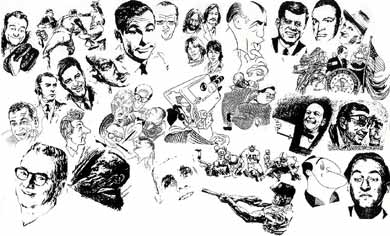
To search for a broadcast, please e nter a
Show Title, Personality, Airdate, Archive ID, Keyword or Phrase into the Search textboxes at the top of the page:
PRESERVING & ARCHIVING THE SOUND OF
LOST & UNOBTAINABLE ORIGINAL TV
(1946 - 1982)
"Preserving & disseminating important TV Audio
Air Checks, the video considered otherwise lost."
-Library of Congress
Vintage Television Audio Broadcasts
22,000 Titles - 20,000 Hours
Home | About us | Order Inquiry | TV Categories | Personality Index | Title Index
Archival Television Audio, Inc.
www.atvaudio.com
209 Sea Cliff Avenue
Sea Cliff, New York 11579
Attention: Phil Gries
|
Founder & Owner Phil Gries Director of Photography www.philgries.com |
"Any Inquiries"
Phone/Fax: (516) 656-5677
Email Us: gries@atvaudio.com
© 2002-2024 Collector's Choice Archival Television Audio, Inc.
All Rights Reserved.

Unique Visitors:
Visitor Counter
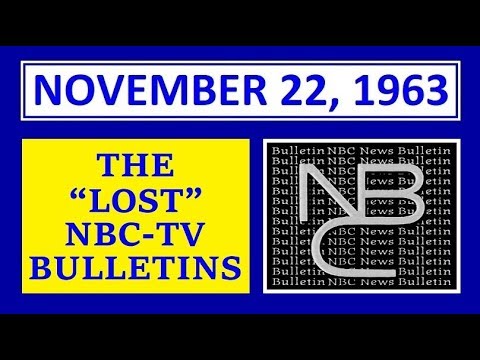
UNIQUE in the WORLD audio air check recordings by 20-year-old Phil Gries, archiving the first, second bulletins & initial NBC TV broadcast coverage of President John F. Kennedy's assassination. Not recorded by NBC or any other resource in the country.
- A&E TV SPECIAL - host Edwin Newman (11-22-1988) introduction - 25th Anniversary of JFK Assassination.
- NBC TV "Lost Don Pardo Bulletins" & Lost first 3:53 TV coverage (Phil Gries unique broadcast audio recording) unable to be video tape recorded or audio tape recorded by NBC.
- Phil Gries telephone interview with Don Pardo (5-14-1998).
- 10 minutes.
LIVE with PHIL GRIES
ARCHIVAL TELEVISION AUDIO - WEBINAR
Each Friday Evening from 7:30 - 8:30PM EST.
 RETRIEVABLE LOST MEMORIES
RETRIEVABLE LOST MEMORIESORDER
Vintage Television Audio Broadcasts
22,000 Titles
20,000 Hours

Testimonials
The Senior Moments Radio Broadcast show interviews Phil Gries about his Archival Television Audio archive and his restored documentary film, "Harlem School 1970"

Glen Cove Senior Center
January 23, 2018
 Phil Gries' recordings
Phil Gries' recordingsof vintage sounds
never grow old.

Hear Phil Gries on

Hear Phil Gries
and Joe Franklin
on Bloomberg Radio
(April 28, 2012)


Home
Contact Us
ORDER INQUIRY
Hear Phil Gries on
National Public Radio
Archive Profile

ALL THINGS CONSIDERED
"Raising Ali"
(May 22, 2015)
Hear Phil Gries
on Sports Talk:
August 25, 2019
June 26, 2016
August 9, 2015




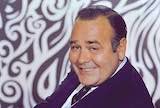
 Archive
ArchiveSearch Library
TV Categories
Personality Index
Title Index
ARSC Journal Article Publication: Lost TV Programs (1946-1972)

Hear Phil Gries presentations at ARSC (Association for Recorded Sound Collections) 2001, 2008, 2009, 2010, 2011, 2014.
Audio Samples

(Audio files may take 20 seconds or more to load)
1960's TV
Audio Player
103 Broadcast Samplers
AudioAndText™
Content
(Browser needs to
allow Flash content)
Content Collections
JFK Assassination
Coverage
NPR Walter Cronkite Essays
Civil Rights Movement (1956-1968)
Space Exploration (1956-1972)
Vietnam War
(1961-1975)
[854 Entries]
Company Information
About Us
Descriptions
Access
Fees
Archive
TIME-LINE
Accreditation
Master Materials
Research
Copyrights
Restricted Archive Titles
Catalogs
Related Materials
TV History
Lost Television
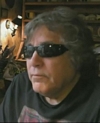
Jose Feliciano, at 70, listening to his FIRST TV variety show appearance (Al Hirt: FANFARE), telecast on July 17, 1965, when he was 19 years old.
TV Audio:
Rare & Valued
When TV Variety
Was King
This Anniversary Day
In Television History
ARSC/IASA London Conference: Why Collect?

News 12 Long Island
Live Television Profile:
Archival Television Audio, Inc
CAPTURED LIVE: CULTURES OF TELEVISION RECORDING AND STORAGE, 1945-1975

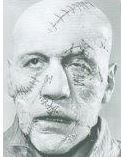
NBC MATINEE THEATER
FRANKENSTEIN
NBC TV - Feb. 5, 1957
8:23 min. excerpt
Phil Gries TV Audio Archive
Profile Segment
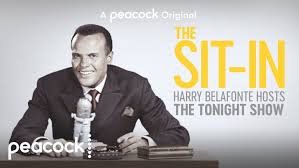
Harry Belafonte Hosts
The Tonight Show
5:21 min. excerpt
Password: Phil
(Case Sensitive)